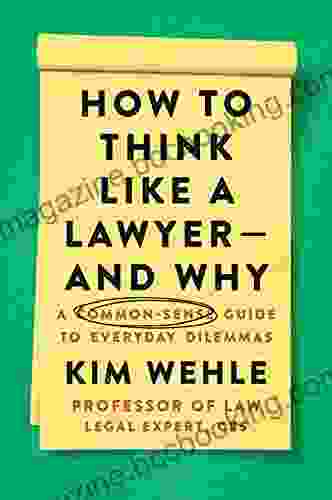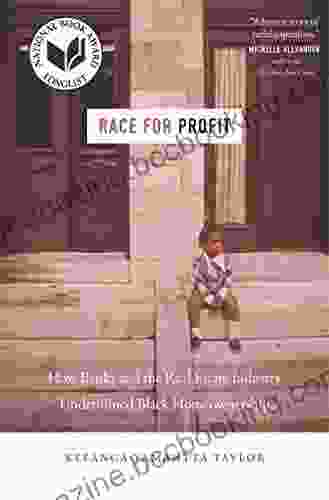How Banks and the Real Estate Industry Undermined Black Homeownership Justice

4.7 out of 5
| Language | : | English |
| File size | : | 3902 KB |
| Text-to-Speech | : | Enabled |
| Screen Reader | : | Supported |
| Enhanced typesetting | : | Enabled |
| X-Ray | : | Enabled |
| Word Wise | : | Enabled |
| Print length | : | 350 pages |
Homeownership is a cornerstone of the American Dream. It is a way for families to build wealth, stability, and a sense of community. However, for Black families, the dream of homeownership has been elusive. For decades, banks and the real estate industry have engaged in discriminatory practices that have made it difficult for Black families to buy homes and build wealth.
The History of Redlining
One of the most egregious examples of housing discrimination is redlining. Redlining is the practice of denying mortgages or insurance to people who live in certain neighborhoods, often based on the racial composition of those neighborhoods. Redlining began in the 1930s, when the federal government created the Home Owners' Loan Corporation (HOLC). The HOLC created a series of maps that divided cities into different risk zones. Black neighborhoods were often designated as "hazardous" or "declining," which made it difficult for Black families to get mortgages.
Redlining had a devastating impact on Black homeownership. In Chicago, for example, the HOLC map designated over 90% of Black neighborhoods as "hazardous." This made it almost impossible for Black families to buy homes in safe, stable neighborhoods.
Predatory Lending
Another discriminatory practice that has undermined Black homeownership is predatory lending. Predatory lending is the practice of lending money to borrowers with high interest rates and fees, often without fully explaining the terms of the loan. Predatory lenders often target Black and Latino borrowers, who are more likely to be financially vulnerable.
Predatory lending can have devastating consequences. Many Black families have lost their homes to foreclosure after being tricked into taking out loans they could not afford. Predatory lending has also contributed to the racial wealth gap, as Black families have lost billions of dollars in home equity due to predatory lending practices.
Other Forms of Housing Discrimination
Redlining and predatory lending are just two examples of the many forms of housing discrimination that Black families face. Other forms of discrimination include:
- Steering: This is the practice of directing Black homebuyers to certain neighborhoods or homes, often based on their race.
- Blockbusting: This is the practice of buying up homes in a Black neighborhood and then selling them to white buyers at a profit, often causing the neighborhood to decline.
- Disinvestment: This is the practice of refusing to invest in Black neighborhoods, which can lead to a decline in housing quality and property values.
The Impact of Housing Discrimination
Housing discrimination has had a devastating impact on Black families and communities. Black families have been denied the opportunity to build wealth through homeownership, and they have been forced to live in segregated neighborhoods that often lack access to good schools, jobs, and other amenities.
Housing discrimination has also contributed to the racial wealth gap. Black families have less wealth than white families, on average, and a significant portion of this gap is due to housing discrimination.
Solutions
There are a number of solutions that can be implemented to address housing discrimination and create a more equitable housing system. These solutions include:
- Enforcing fair housing laws: The federal government and state governments should enforce fair housing laws more aggressively. This includes investigating and prosecuting cases of housing discrimination, and providing financial assistance to victims of discrimination.
- Expanding affordable housing: The government should invest in affordable housing programs to make it easier for Black families to buy homes. This includes providing down payment assistance, closing cost assistance, and other forms of financial assistance.
- Promoting homeownership counseling: The government should promote homeownership counseling programs to help Black families learn about the homebuying process and avoid predatory lending.
- Investing in Black communities: The government and private sector should invest in Black communities to improve housing quality, schools, and other amenities. This will make Black neighborhoods more attractive to homebuyers and help to close the racial wealth gap.
Addressing housing discrimination is essential for creating a more just and equitable society. By implementing these solutions, we can help to ensure that all families have the opportunity to achieve the dream of homeownership.
4.7 out of 5
| Language | : | English |
| File size | : | 3902 KB |
| Text-to-Speech | : | Enabled |
| Screen Reader | : | Supported |
| Enhanced typesetting | : | Enabled |
| X-Ray | : | Enabled |
| Word Wise | : | Enabled |
| Print length | : | 350 pages |
Do you want to contribute by writing guest posts on this blog?
Please contact us and send us a resume of previous articles that you have written.
 Book
Book Novel
Novel Page
Page Chapter
Chapter Text
Text Story
Story Genre
Genre Reader
Reader Library
Library Paperback
Paperback E-book
E-book Magazine
Magazine Newspaper
Newspaper Paragraph
Paragraph Sentence
Sentence Bookmark
Bookmark Shelf
Shelf Glossary
Glossary Bibliography
Bibliography Foreword
Foreword Preface
Preface Synopsis
Synopsis Annotation
Annotation Footnote
Footnote Manuscript
Manuscript Scroll
Scroll Codex
Codex Tome
Tome Bestseller
Bestseller Classics
Classics Library card
Library card Narrative
Narrative Biography
Biography Autobiography
Autobiography Memoir
Memoir Reference
Reference Encyclopedia
Encyclopedia Kaye D Hennig
Kaye D Hennig Key Notes
Key Notes Toby A H Wilkinson
Toby A H Wilkinson Kaplan Test Prep
Kaplan Test Prep M G Herron
M G Herron Kevin Espiritu
Kevin Espiritu Kerri Hummingbird Sami
Kerri Hummingbird Sami Sarah J Maas
Sarah J Maas Katya Seberson
Katya Seberson Tom Rosenstiel
Tom Rosenstiel Kathleen Rooney
Kathleen Rooney Mick Dolan
Mick Dolan Kathleen Weber
Kathleen Weber Kathryn S Olmsted
Kathryn S Olmsted Susannah Cahalan
Susannah Cahalan Katherine Pangonis
Katherine Pangonis Mark A Noll
Mark A Noll Paul Stanley
Paul Stanley Phyllis Reynolds Naylor
Phyllis Reynolds Naylor Lisa Maloney
Lisa Maloney
Light bulbAdvertise smarter! Our strategic ad space ensures maximum exposure. Reserve your spot today!

 Brett SimmonsEaster For To Year Old Girls And Boys: A Delightful Journey of Discovery and...
Brett SimmonsEaster For To Year Old Girls And Boys: A Delightful Journey of Discovery and...
 Herb SimmonsDiscover The Hidden Affiliate Marketing Tactics That Can Increase Your Income
Herb SimmonsDiscover The Hidden Affiliate Marketing Tactics That Can Increase Your Income E.E. CummingsFollow ·4.4k
E.E. CummingsFollow ·4.4k Ray BlairFollow ·15k
Ray BlairFollow ·15k Brenton CoxFollow ·2.5k
Brenton CoxFollow ·2.5k Vladimir NabokovFollow ·14.4k
Vladimir NabokovFollow ·14.4k Emmett MitchellFollow ·11.2k
Emmett MitchellFollow ·11.2k Mario Vargas LlosaFollow ·18.4k
Mario Vargas LlosaFollow ·18.4k Brian BellFollow ·16.1k
Brian BellFollow ·16.1k Ashton ReedFollow ·19.6k
Ashton ReedFollow ·19.6k

 Joshua Reed
Joshua ReedUnveiling the Profound Essence of Taekwondo: Spirit and...
Taekwondo, an ancient...

 Clarence Brooks
Clarence BrooksUnveiling Clarity: The Common Sense Guide to Everyday...
In the labyrinthine world of legal...

 Anthony Wells
Anthony WellsBless Me, Ultima: A Literary Odyssey into the Heart of...
In the tapestry of American literature,...

 Alexandre Dumas
Alexandre DumasPioneer Life Or Thirty Years A Hunter - A Captivating...
Discover the Raw and...

 Samuel Beckett
Samuel BeckettThe Mike Fisher Story: An Inspiring Tale of Faith,...
Prepare to be...
4.7 out of 5
| Language | : | English |
| File size | : | 3902 KB |
| Text-to-Speech | : | Enabled |
| Screen Reader | : | Supported |
| Enhanced typesetting | : | Enabled |
| X-Ray | : | Enabled |
| Word Wise | : | Enabled |
| Print length | : | 350 pages |










